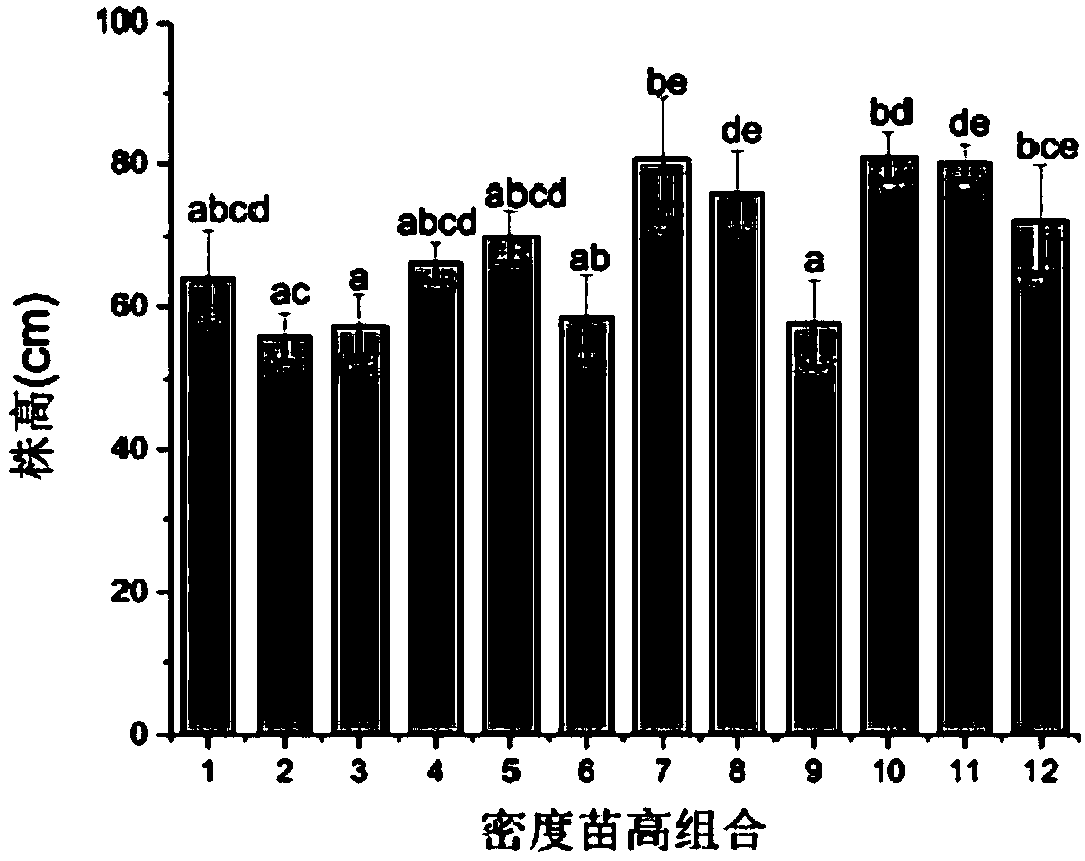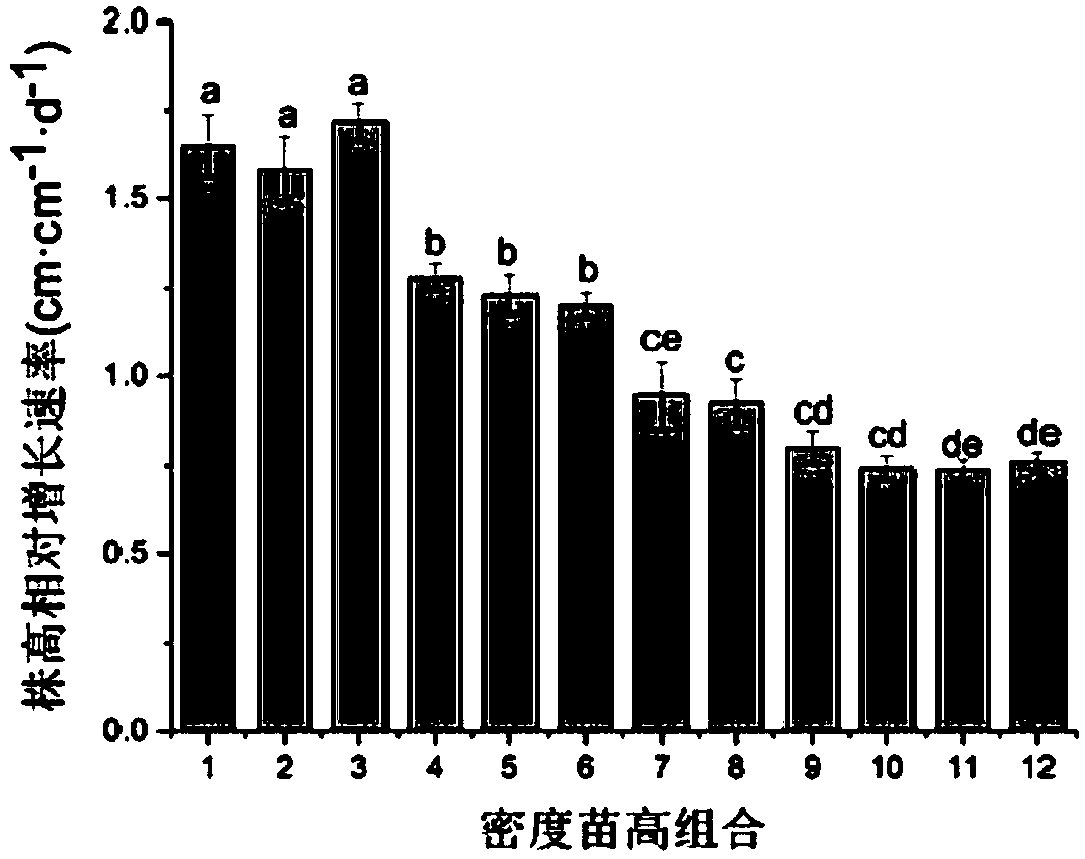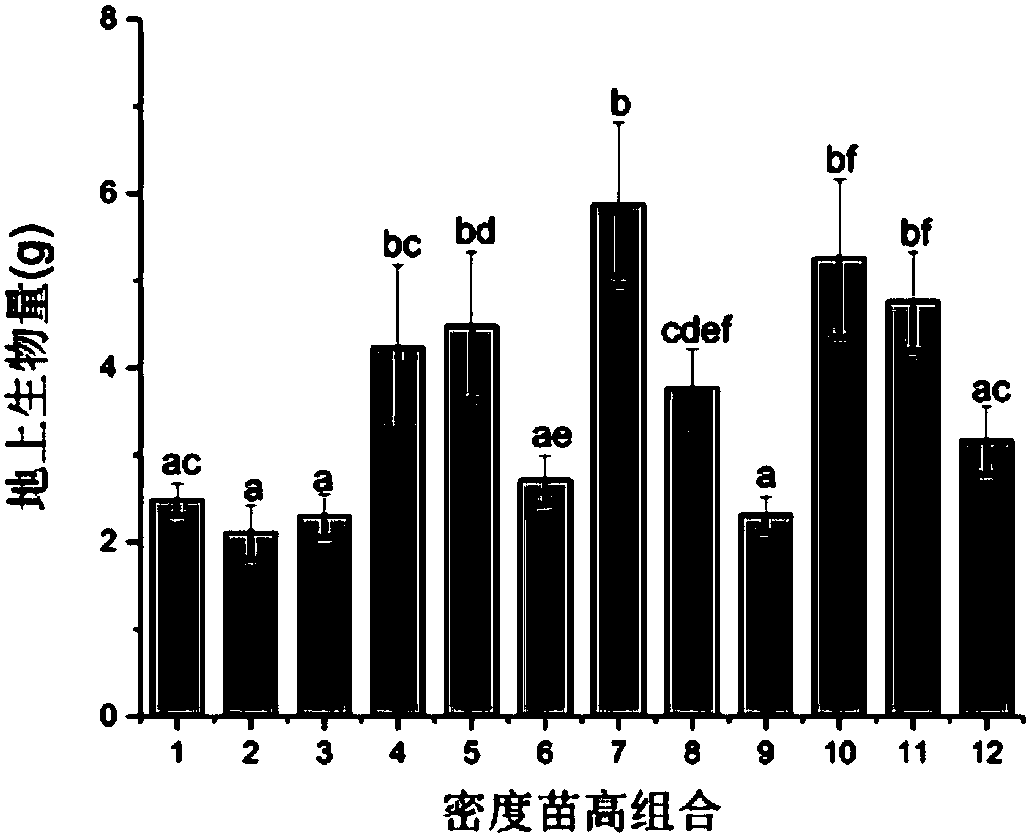Method for obtaining optimal transplanting density and initial planting height of reed seedlings
A technology of transplanting density and acquisition method is applied in the field of acquiring the best transplanting density and initial planting height of reed seedlings, which can solve the problems of low reed survival rate and slow growth of seedlings, and achieves increased plant height and biomass accumulation, High relative growth rate, favorable for rapid recovery and reconstruction
- Summary
- Abstract
- Description
- Claims
- Application Information
AI Technical Summary
Problems solved by technology
Method used
Image
Examples
specific Embodiment approach 1
[0019] Specific embodiment one: present embodiment is a kind of reed seedling optimal transplanting density and the acquisition method of initial planting height, specifically is finished according to the following steps:
[0020] 1. Collection of reed rhizomes in the wild: In late April, dig out rhizomes through small patches, dig up to the extension of horizontal rhizomes, dig out rhizomes, put them into black plastic bags, and Spray water to keep the surface of the rhizome moist to obtain the rhizome to be raised;
[0021] 2. Indoor seedling cultivation: wash and remove the soil on the surface of the rhizomes to be raised, and then spread it on the surface of the sand. The depth of the sand is 48cm to 52cm. Then use river sand to cover and bury the rhizomes to be raised, and spray water until the water content of the sand reaches 85% to 100%, and then grow seedlings at an indoor temperature of 25±3°C;
[0022] 3. Seedling cultivation: 4 seedling height gradients are set wi...
specific Embodiment approach 2
[0025] Embodiment 2: The difference between this embodiment and Embodiment 1 is: in step 1, the rhizomes are excavated through small plaques, and the rhizomes are excavated at a depth of 20 cm to 30 cm. Others are the same as the first embodiment.
specific Embodiment approach 3
[0026] Specific embodiment three: the difference between this embodiment and specific embodiment one or two is: in step 2, river sand is used to cover and bury the rhizomes to be raised, and the thickness of river sand covering is 2cm. Others are the same as those in Embodiment 1 or 2.
PUM
 Login to View More
Login to View More Abstract
Description
Claims
Application Information
 Login to View More
Login to View More - R&D
- Intellectual Property
- Life Sciences
- Materials
- Tech Scout
- Unparalleled Data Quality
- Higher Quality Content
- 60% Fewer Hallucinations
Browse by: Latest US Patents, China's latest patents, Technical Efficacy Thesaurus, Application Domain, Technology Topic, Popular Technical Reports.
© 2025 PatSnap. All rights reserved.Legal|Privacy policy|Modern Slavery Act Transparency Statement|Sitemap|About US| Contact US: help@patsnap.com



